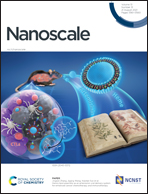3D hierarchical porous carbon matching ionic liquid with ultrahigh specific surface area and appropriate porous distribution for supercapacitors†
Abstract
Supercapacitors, as one of the most promising energy storage devices, have high power density but low energy density. An appropriate collocation of porous carbon electrodes and ionic liquid electrolytes can improve notably the performance of supercapacitors. Herein, we report a pre-assembly strategy to prepare three-dimensional (3D) hierarchical porous carbons (HPCs) as the electrode materials for supercapacitors. Three long-chain hydrophilic polymers polyacrylamide (PAM)/gelatin/F127 in water form 3D frameworks by pre-assembly and further form a hydrogel. Then the hydrogel is freeze-dried, carbonized, and etched to form 3D hierarchical porous carbons. The effects of pore volume, pore size, and ratio of mesopores to micropores on the performance of ionic liquid-based supercapacitors are investigated. The porous structure of the prepared HPCs can well match EMIMBF4. Therefore, HPCs as electrode materials for supercapacitors exhibit an excellent specific capacity of 216.5 F g−1 at 1 A g−1, and the as-assembled symmetric supercapacitor delivers a superior energy density of 108.6 W h kg−1 at a power density of 961.1 W kg−1. Meanwhile, the symmetric supercapacitor maintains 84.4% of its initial capacitance after 10 000 cycles at 3 A g−1. This work provides a guide for developing new porous carbon materials for supercapacitors with a high energy density.



 Please wait while we load your content...
Please wait while we load your content...